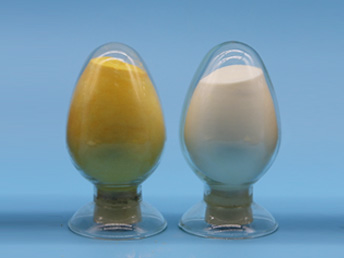There are many methods for water treatment, such as adsorption, chemical oxidation, electrodialysis, biochemistry and ion exchange, etc. As one of the oldest water treatment methods, flocculation precipitation is a more effective and low-cost pretreatment method. Nowadays, it has been widely used in the field of water treatment at home and abroad.
The principle of flocculation precipitation method is to add flocculant to the water, so that suspended particles and colloids condense into larger particles, so as to achieve the purification and separation of water quality. This method is simple, efficient, and the investment cost is also low, so more and more attention and attention. There are many kinds of flocculants, which can be divided into inorganic flocculants, organic flocculants and microbial flocculants according to their different chemical compositions.
1, inorganic flocculant
Inorganic flocculants mainly include metal salt flocculants, single inorganic flocculants and compound inorganic flocculants. Inorganic flocculant is cheap, mainly aluminum salt and iron salt two major systems, aluminum salt flocculant treatment sewage sludge as fertilizer used in agriculture, so that the soil aluminum content increases, resulting in aluminum damage, in addition, it is not conducive to human health, due to AI3+ intake, cause aluminum anemia, aluminum stomach disease and aluminum encephalopathy. At present, the increasing number of Alzheimer’s disease is a kind of aluminum encephalopathy. Iron salt flocculant not only has a strong corrosion, limiting the equipment used, but also easy to residual iron ions, the treated water with color, affecting the water quality.
2, organic flocculant
Organic flocculants used in sewage treatment began in the late 1950s, due to the strong adsorption of molecular chains and colloidal particles in water, flocculation bridge capacity is strong, so the flocculation performance is excellent. Organic polymer flocculants are roughly divided into natural polymer flocculants and synthetic polymer flocculants, synthetic organic polymer flocculants can be divided into non-ionic, anionic, cationic and zymphoionic types according to the different types of hydrophilic groups, adsorption groups and spot groups in the molecular structure. The anionic polymer can carry a COO 1, an NH 1, an OH, a SO3 hydrophilic groups, and has a variety of structures such as chain and ring, and has a strong adsorption effect on the negative colloid, which is conducive to the pollutant entering the floc. In practical applications, due to the negative charge of colloids and suspended particles, the charge of cationic neutralization particles is often used, so the synthetic organic polymer flocculants at home and abroad are gradually transformed to positive ionic polymer flocculants, mainly polyacrylamide. Organic polymer flocculant is often used in sewage treatment because of its fast flocculation speed, low dosage and low dross yield.
3, microbial flocculant
Microbial flocculant (MBF) is a new, non-toxic, efficient and cheap water treatment agent with biodecomposition and safety obtained by biological fermentation, extraction and refining by biotechnology. Its main active components are amphoteric polyelectrolyte proteins, cellulose and DNA. Microbial flocculants mainly include the flocculants using microbial cell wall extracts, the flocculants using microbial cell wall metabolites, the flocculants directly using microbial cells and the flocculants obtained by cloning technology. Microbial flocculants have attracted much attention because of their non-toxic, efficient and widely used characteristics, known as the third generation of flocculants. However, the culture of microbial flocculant producing bacteria usually uses starch, glucose, galactose, etc., as an organic carbon source, and yeast extract juice, peptone, beef paste, etc., as an organic nitrogen source, resulting in high production costs of microbial flocculants. At present, the vast majority of microbial flocculants are in the laboratory research stage.
These are the different types of flocculants. Flocculants are widely used in sewage treatment, mining, oilfields, paper industry, food processing, textile industry and other fields. The main components of polymer flocculants are polymer compounds, also commonly known as polymers. Common polymer flocculants include polyacrylamide (PAM), polyvinyl alcohol (PVA), polyacrylic acid (PAA) and so on. In the water treatment industry, polyacrylamide organic polymer flocculants are commonly used for treatment.
Polyacrylamide plays an important role in water treatment. When there is suspended matter, colloidal matter or organic matter in the water, it will lead to turbidity, chroma increase, suspended matter deposition and other problems. The use of polyacrylamide can effectively solve these problems. When polyacrylamide is added to water, its molecular chain will interact with suspended matter or colloidal matter to form large floc. These flocs increase in size and weight, thus making them heavier than water molecules and can be easily separated by precipitation or filtration. This can make the water clear and transparent, and effectively remove impurities and pollutants in the water.
When choosing polyacrylamide for sewage treatment, the most important thing is to choose the appropriate polyacrylamide model and the stable quality of polyacrylamide. Guangdong Shouxin Environmental Protection Material Technology Co., LTD., is a global polyacrylamide quality stable brand. We have developed more than 100 product models for end customers in various industries, which can provide customers with more accurate selection. And the first letter from the control of raw materials, formulation research and development and the double supervision and testing of the warehouse are strict supervision, and there is no manufacturer’s production cost concerns, always choose the quality of stable and qualified products out of the warehouse, so as to ensure the stability of the product.
Other related products:
If you want to know more product details, please contact us.
WhatsApp & WeChat & Tel:+8613838149798


